Our Low FODMAP Roasted Pumpkin Quinoa Salad is hearty enough for a main dish at lunch, or add a small amount of roasted meat, chicken, fish or tofu for dinner. Japanese pumpkin, also known as kabocha squash and Kent pumpkin, contains No FODMAPs and quinoa is low FODMAP, protein-packed and easy to cook. Combined with fresh herbs and nuts and fresh, juicy pomegranate seeds, this is a memorable salad. Company worthy.
Is Pumpkin Low FODMAP?
Yes, there are various “pumpkins” that are low FODMAP (and even No FODMAP).
Let’s talk about pumpkin and winter squashes. Not all are created equal, in color, flavor, texture or FODMAP content.
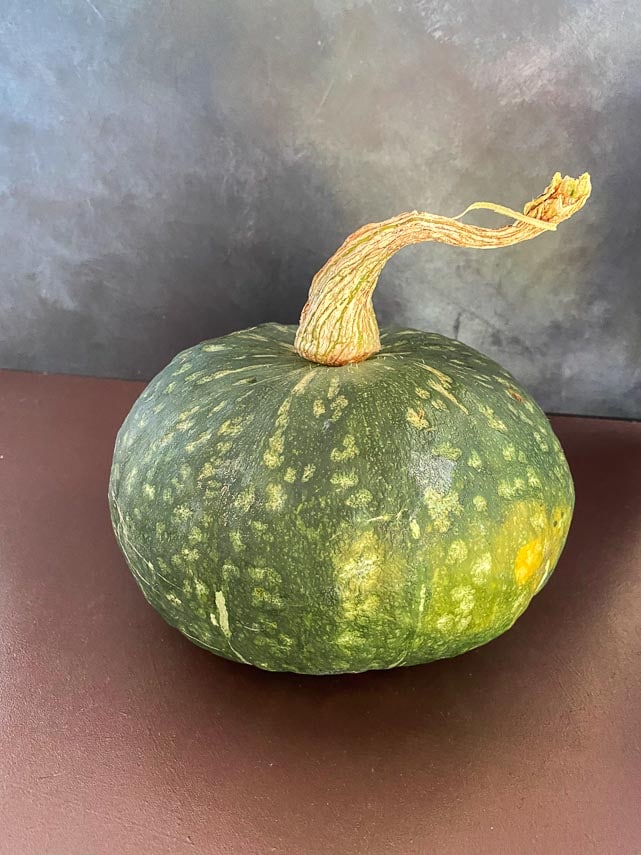
For everything canned pumpkin related, please read our Explore An Ingredient: Pumpkin.
Pumpkins can properly be referenced as types of winter squash but not all winter squash are considered pumpkins. And what Australians call “pumpkin” (like butternut), we in the U.S. call winter squash or just squash. Confused? Don’t be.
For our purposes – and yours – we just have to consider the ones that have been lab tested for FODMAPs so that we know what we are dealing with.
Unfortunately, Monash and FODMAP Friendly use different terms. But don’t get bamboozled – Japanese pumpkin, kabocha and Kent pumpkin are all the same thing.
As Lab Tested by FODMAP Friendly:
- Kent pumpkin gets a “Pass” at ½ cup (75 g).
- Butternut Pumpkin has been lab tested by FODMAP Friendly and gets a “Pass” at ½ cup (75 g).
As Lab Tested by Monash University:
- Japanese/Kabocha pumpkin is low FODMAP at 2/3 cup (75 g) but that is just the recommended serving size. The small print tells us that no FODMAPs were detected in their lab testing.
- Butternut Pumpkin is low FODMAP at ⅓ cup (45 g).
In the U.S. we call the Japanese/Kent Pumpkin “kabocha squash” and we refer to Butternut as squash, not pumpkin.
Prepping Kabocha Squash
The recipe calls for 1-pound (455 g) of trimmed, seeded, peeled and cubed squash. You need to start with more than that because there is a lot of weight in the skin, seeds and often a big, heavy, woody stem. Always better to have more that not enough. Buy at least a 1 ½-pound (680 g) squash.
I use a sharp chef’s knife to remove the stem and peel, then cut it into 1-inch (2.5 cm) cubes for this dish.
Quinoa Is Low FODMAP
Some grains are low FODMAP and some are not. Some grains are gluten-free, and some are not. Quinoa is both low FODMAP and gluten-free. It is also high in protein, quick to cook and all colors – white, black and red – have been lab tested by Monash and are low FODMAP in 1 cup cooked amounts, which is 155 g. That is a very generous amount that we can use in our low FODMAP recipes.
To learn more about quinoa, read our Explore An Ingredient: Quinoa.
Do-Ahead Tips
I like this dish freshly made, but there are a few things you can do to prep ahead.
You could roast the pumpkin and make the quinoa a day ahead, but make sure they have come all the way to room temperature before assembling the salad. You can even warm them a bit.
The seeds and nuts could be roasted even a few days before and just have them ready to go.
Other than that, assemble right before serving.
How To Make Low FODMAP Roasted Pumpkin Quinoa Salad
First you have to prep your kabocha. Use a sharp chef’s knife to cut the pumpkin in half.
Use a spoon to scoop out seeds.
Then use the sharp knife to cut away the tough green skin.
Cut into cubes about 1-inch (2.5 cm) in size.
Here you can see how roughly cut the scallions should be.
Grind the fennel seed in a mortar and pestle. If you don’t have one you can try crushing with a rolling pin (but the tend to fly around).
Toss the pumpkin, scallions, oil, maple syrup, coriander, fennel and cumin together in a bowl. Below you can see the ingredients folded together.
Season with salt and pepper and scrape out onto prepared pan in a single layer. I forgot to line my pan when I took these pictures. You can do it either way, but there is more clean-up if you don’t.
Roast for 15 minutes, stir everything around, then roast for 10 to 15 minutes more or until the pumpkin is tender when pierced with a knife.
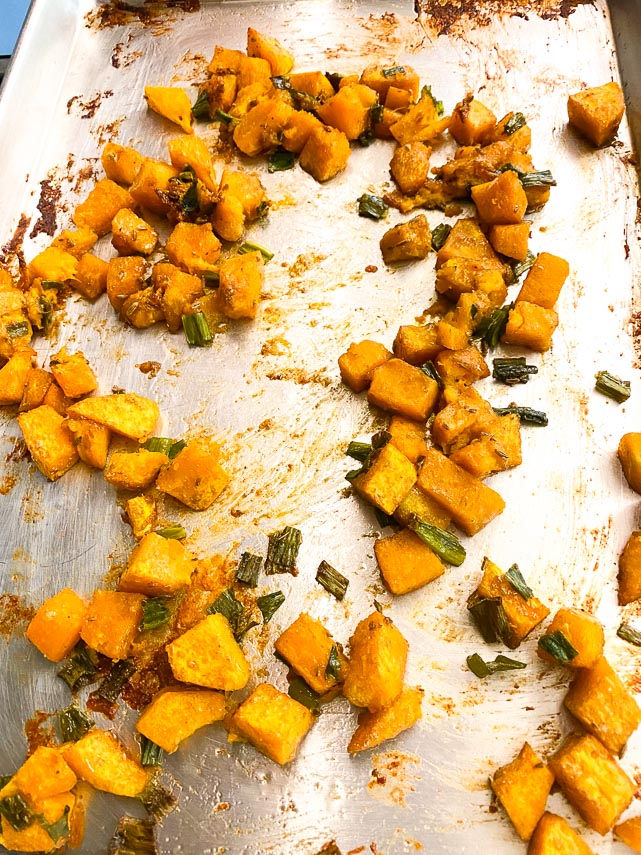
Make The Quinoa
While the pumpkin is roasting, make the quinoa. Stir the quinoa and water together in a small pot, add a pinch of salt, cover and bring to a boil. Adjust heat to low and cook until the water is just absorbed, about 10 minutes, then turn off the heat but leave the cover on. Allow to sit for 5 minutes, then fluff with a fork. Set aside to cool to room temperature while you prep the rest of the dish.
Assemble The Salad
You need sumac for this dish, which is a spice with a lemony, tart flavor. Sumac has been lab tested and is low FODMAP in amounts of 1 teaspoon or 2g. Here is what it looks like:
Make sure you use fresh cilantro and mint, seen here in a pile, ready to be chopped.
Combine the room temp or just warm pumpkin and quinoa into a mixing bowl and add the chopped herbs, lemon juice, olive oil and sumac and gently fold together. Taste and season with salt and pepper.
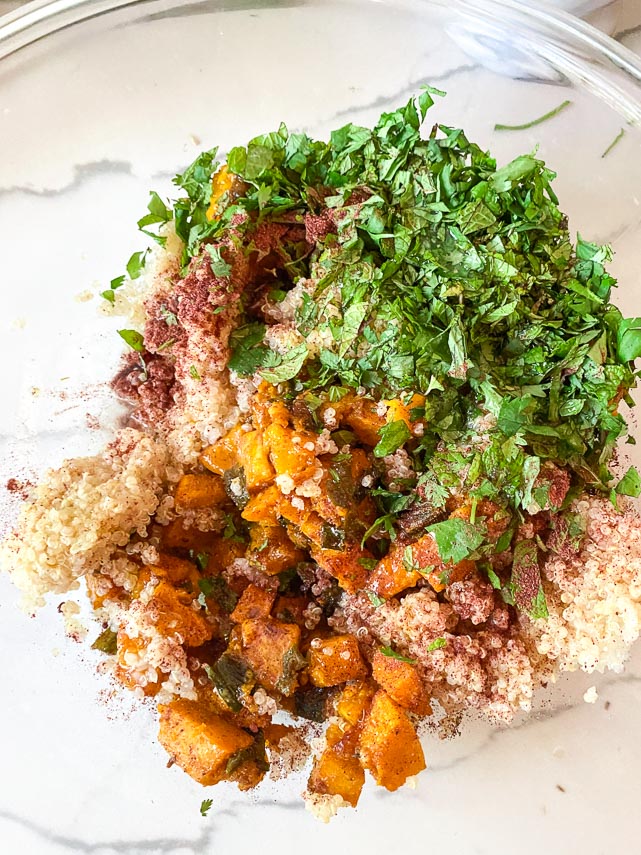
Arrange the salad on a serving plate, top with pomegranate, pepitas and hazelnuts and serve immediately.
PS: If you make this ahead and refrigerate it, the experience will go from brilliant and exciting to…well, I was going to say sub-par. But let me tell you a story. I brought some refrigerated leftovers to Robin. She said it was the only thing I have ever made her that she spit out LOL – and I have been cooking for her for decades! Some things are best eaten fresh AND THIS SALAD IS ONE OF THEM. You have been warned:).
More (Almost) Main Dish Salads
We love salads that are so hearty they can make a meal. This roasted pumpkin salad was inspired by the one we first saw at littlebigh.com.
Here are a few others for you to try.
- Baby Lettuces, Oranges, Quinoa & Chickpeas
- Frisée salad with Poached Egg, Bacon & Sourdough Croutons
- Grains, Greens & Fruit Salad
- Roasted Kabocha with Crispy Quinoa Crumbs
- Kale Salad with Roasted Butternut Squash and Pomegranate
-
Kale Quinoa Salad with Blueberries, Green Beans, Feta & Pecans
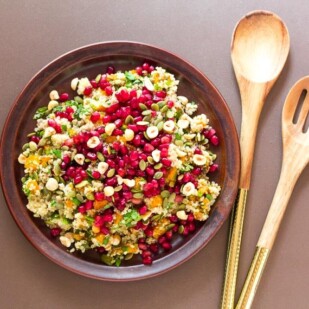
Low FODMAP Roasted Pumpkin Quinoa Salad
Our Low FODMAP Roasted Pumpkin Quinoa Salad is hearty enough for a main dish at lunch, or add a small amount of roasted meat, chicken, fish or tofu for dinner. Japanese pumpkin, also known as kabocha squash and Kent pumpkin, contains No FODMAPs and quinoa is low FODMAP, protein-packed and easy to cook. Combined with fresh herbs and nuts and fresh, juicy pomegranate seeds, this is a memorable salad. Company worthy.
Low FODMAP Serving Size Info: This salad can serve 6 as a side dish or 4 as a main lunch dish.
Ingredients:
Roasted Pumpkin:
- 1- pound (455 g or about 4 cups) cubed kabocha squash; buy at least a 1 ½-pound (680 g) squash
- 1 cup (40 g) very roughly chopped scallions, green parts only
- 2 tablespoons extra-virgin olive oil
- 1 tablespoon maple syrup
- 1 teaspoon ground coriander
- 1 teaspoon fennel seeds, ground in a mortar and pestle
- ½ teaspoon ground cumin
- Kosher salt
- Freshly ground black pepper
Quinoa & Salad:
- 3/4 cup (68 g) washed quinoa, black, red or white (we used white)
- 1 1/2 cup (360 ml) water
- 1/4 cup (8 g) finely chopped cilantro leaves
- 1/4 cup (10 g) finely chopped mint leaves
- 2 tablespoons freshly squeezed lemon juice
- 1 tablespoon extra-virgin olive oil
- 1 teaspoon ground sumac
- Kosher salt
- Freshly ground black pepper
- 1/2 cup (90 g) pomegranate seeds
- 2 tablespoons raw or roasted pepitas
- 2 tablespoons roughly chopped peeled hazelnuts
Preparation:
-
For the Roasted Pumpkin: Position rack in middle of oven. Preheat oven 425°F (220°C). Line a half-sheet pan with aluminum foil; set aside.
-
Toss the pumpkin, scallions, oil, maple syrup, coriander, fennel and cumin together in a bowl. Season with salt and pepper and scrape out onto prepared pan in a single layer.
-
Roast for 15 minutes, stir everything around, then roast for 10 to 15 minutes more or until the pumpkin is tender when pierced with a knife. Set aside to cool to room temperature while you prep the rest of the dish.
-
For the Salad: While the pumpkin is roasting, make the quinoa. Stir the quinoa and water together in a small pot, add a pinch of salt, cover and bring to a boil. Adjust heat to low and cook until the water is just absorbed, about 10 minutes, then turn off the heat but leave the cover on. Allow to sit for 5 minutes, then fluff with a fork. Set aside to cool to room temperature while you prep the rest of the dish.
-
Combine the room temp or just warm pumpkin and quinoa into a mixing bowl and add the chopped herbs, lemon juice, olive oil and sumac and gently fold together. Taste and season with salt and pepper. Arrange on a serving plate, top with pomegranate, pepitas and hazelnuts and serve.
Notes:
Tips
This dish lends itself to some easy and flavorful variations.
• Use Garlic-Infused Oil, made with olive oil, instead of the olive oil
• Or try a nut oil: walnut oil or hazelnut oil are incredible
• Use sliced or slivered almonds, pecans or walnuts instead of the hazelnuts
• Instead of pepitas, use sunflower seeds
• If you don’t have the sumac, add 1 teaspoon of finely grated lemon zest
• Or try orange zest!
• Add a big handful of arugulas, baby spinach or finely cut ribbons of kale
FODMAP Information
Our recipes are based on Monash University and FODMAP Friendly science.
- Hazelnuts: Hazelnuts have been lab tested for FODMAPs by Monash University. 15 g, or about 10 nuts, are Green Light low FODMAP. They become Moderate for FODMAPs at double the amount.
- Kabocha Squash: Also called Japanese Pumpkin and Kent Pumpkin. Both Monash University and FODMAP Friendly have lab tested this vegetable. Monash says Japanese/Kabocha pumpkin is low FODMAP at 2/3 cup (75 g) but that is just the recommended serving size. The small print tells us that no FODMAPs were detected in their lab testing. Kent pumpkin gets a “Pass” at ½ cup (75 g) from FODMAP Friendly.
- Lemon Juice: Monash University has lab tested lemon juice and it is low FODMAP in ½ cup (125 g) amounts.
- Maple Syrup: Both Monash University and FODMAP Friendly have lab tested maple syrup. Monash says that maple syrup is Green light and low FODMAP in servings of 2 Australian tablespoons (50 g). FODMAP Friendly gives it a “Pass” at 2 tablespoons (53 g). These amounts are likely recommended due to Australian healthy eating guidelines; no upper limit is posted by either Monash or FODMAP Friendly.
- Oil: All pure oils are fats and contain no carbohydrates, therefore they contain no FODMAPs.
- Pumpkin Seeds: Monash and FODMAP Friendly have both lab tested pumpkin seeds. They are listed under “pumpkin seeds” on the Monash app and they state a Green Light low FODMAP serving at 2 tablespoons (23 g). FODMAP Friendly lists them under “pepitas” and gives them a “Pass” at ¼ cup (30 g). The image on the FODMAP Friendly app shows them in the shell.
- Scallions: The green parts of scallions are low FODMAP as determined by Monash University lab testing and can be used to add onion flavor to your low FODMAP cooking.
Please always refer to the Monash University & FODMAP Friendly smartphone apps for the most up-to-date lab tested information. As always, your tolerance is what counts; please eat accordingly. The ultimate goal of the low FODMAP diet is to eat as broadly as possible, without triggering symptoms, for the healthiest microbiome.
Nutrition
All nutritional information is based on third-party calculations and should be considered estimates. Actual nutritional content will vary with brands used, measuring methods, portion sizes and more. For a more detailed explanation, please read our article Understanding The Nutrition Panel Within Our Recipes.
For more salad inspiration, check out this salad round-up.
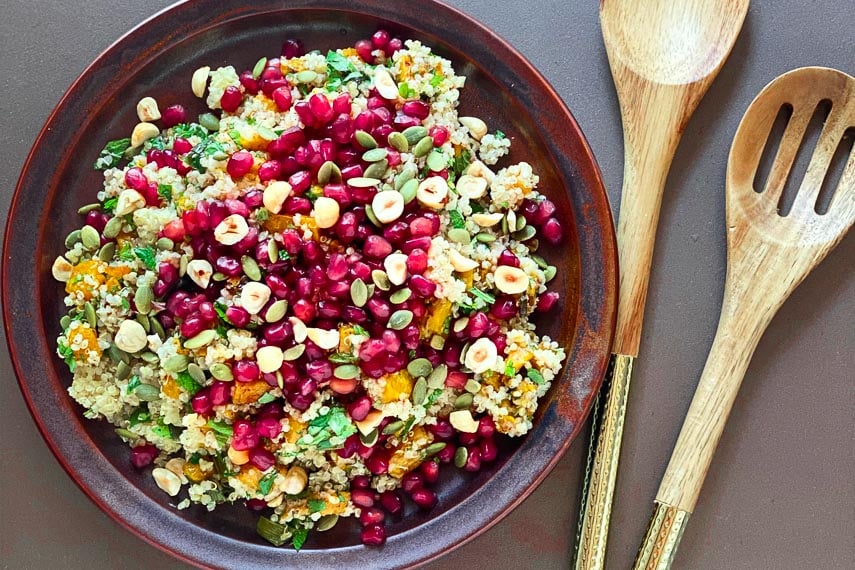
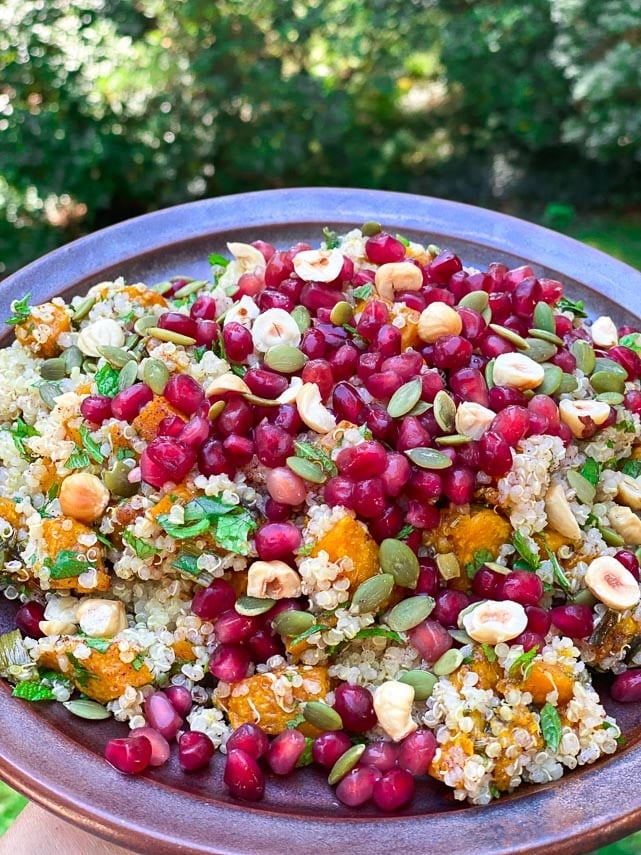
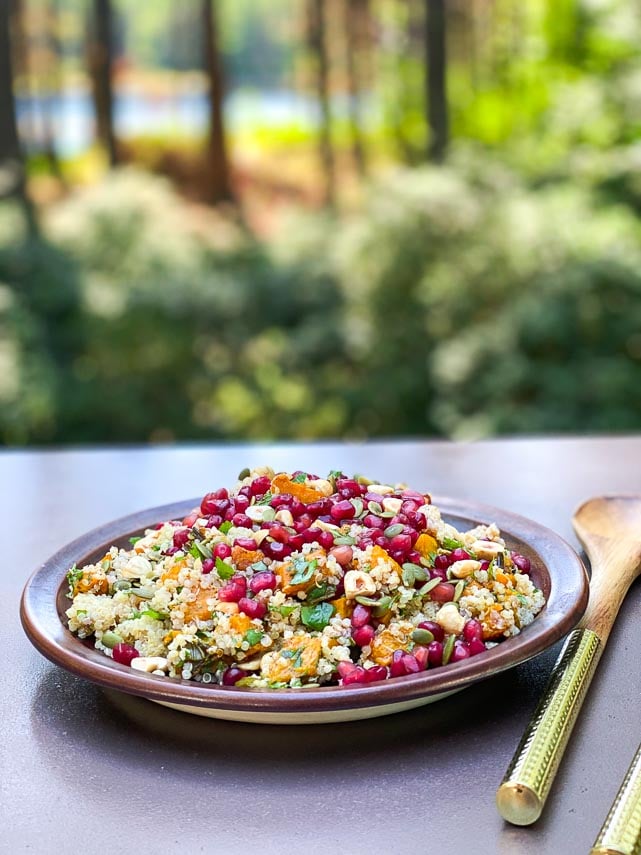
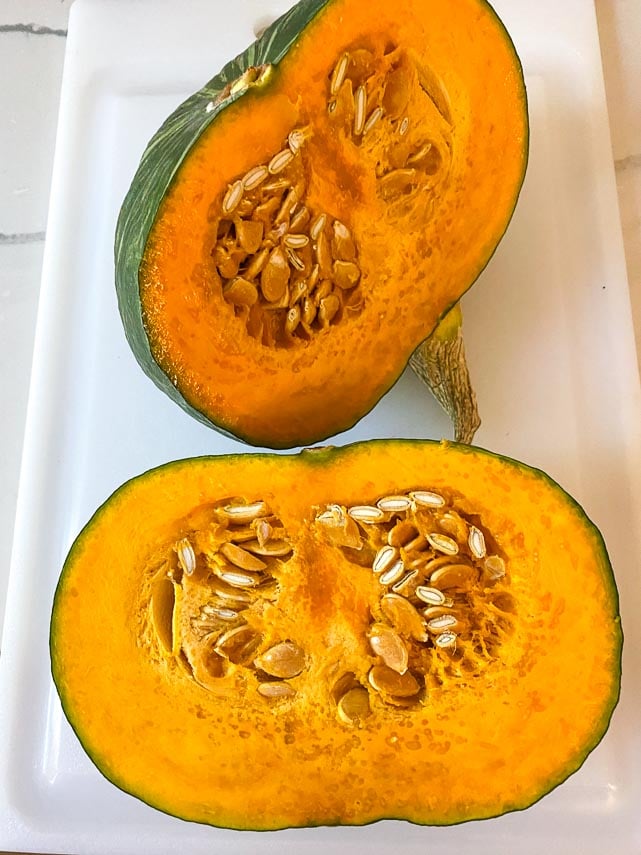
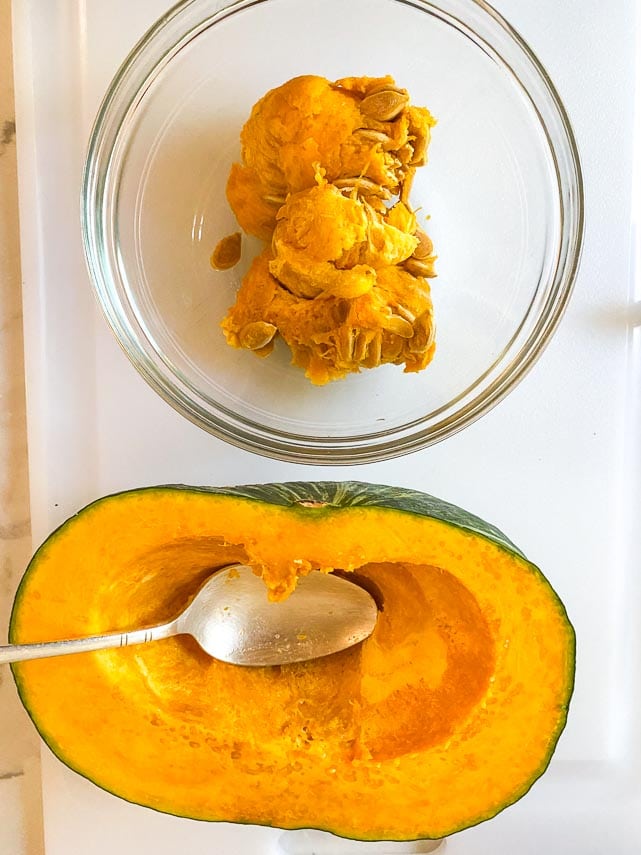
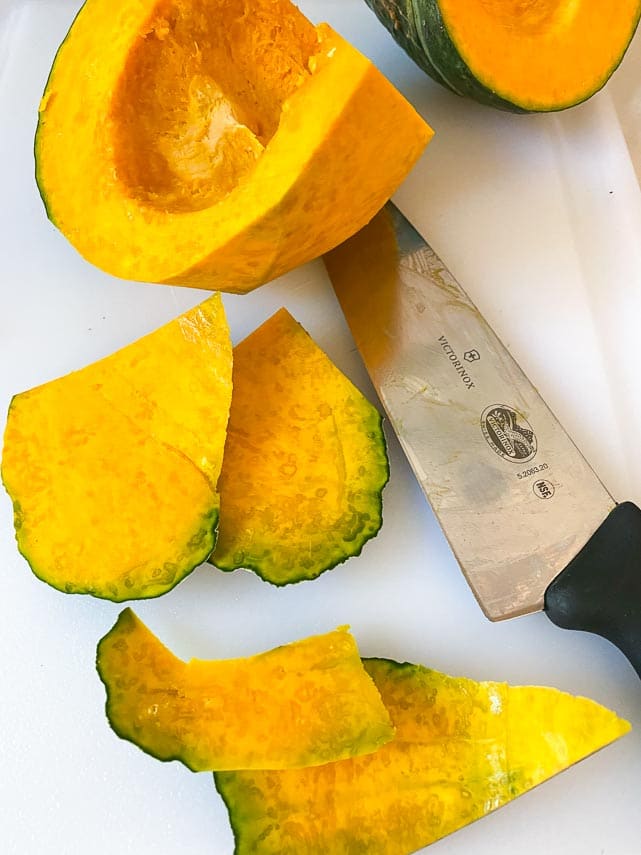
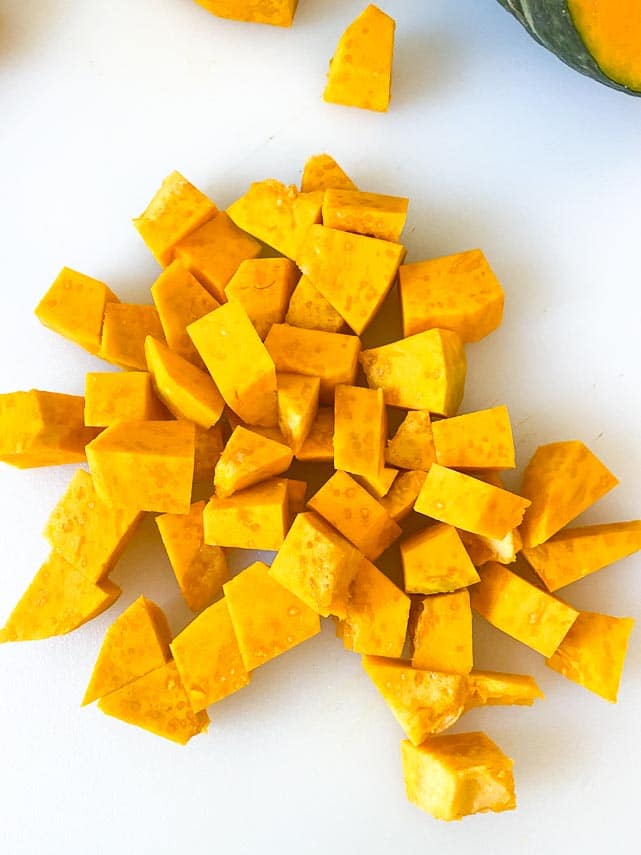
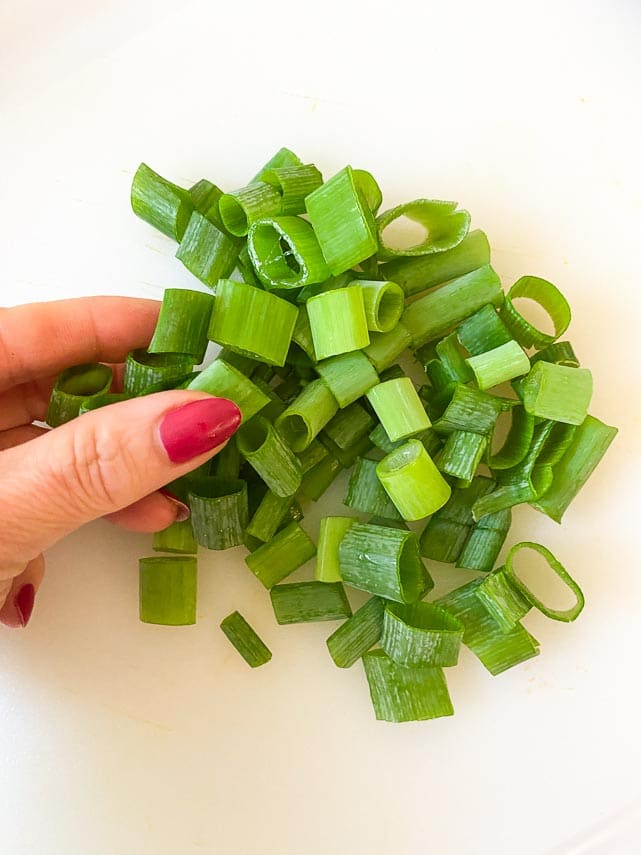
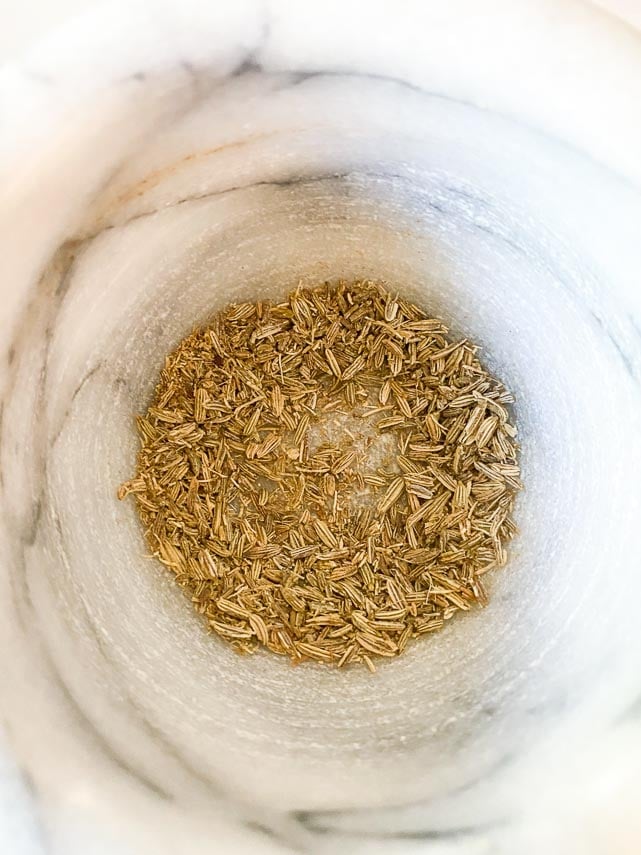
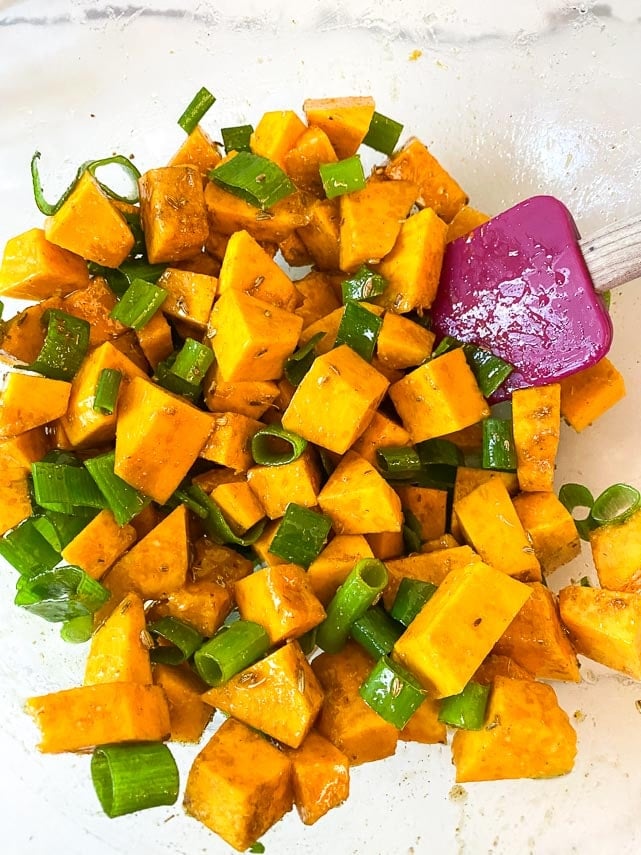
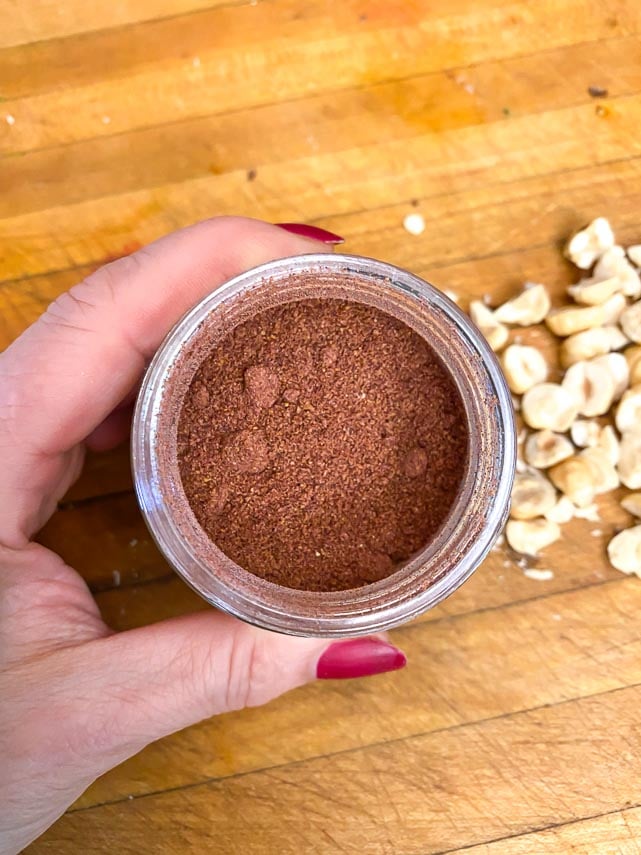
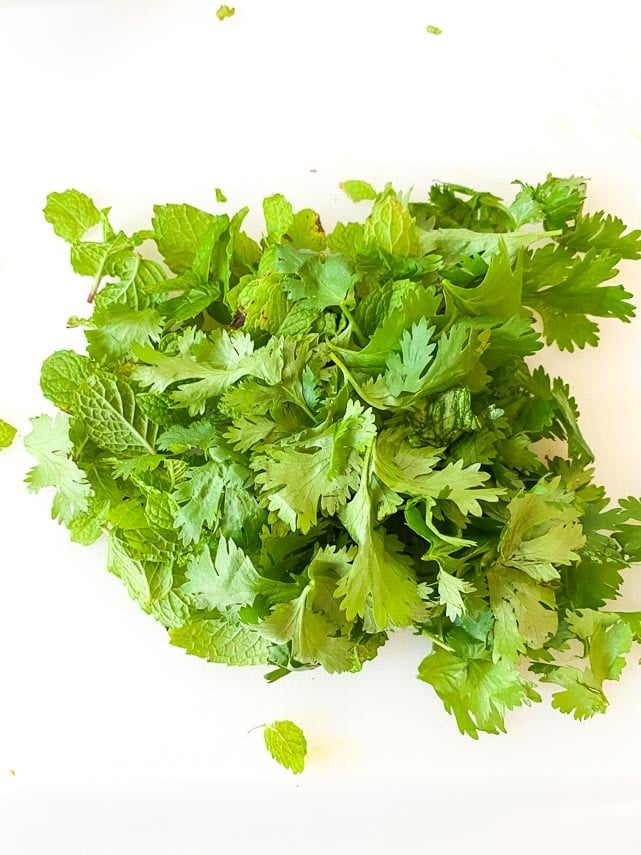
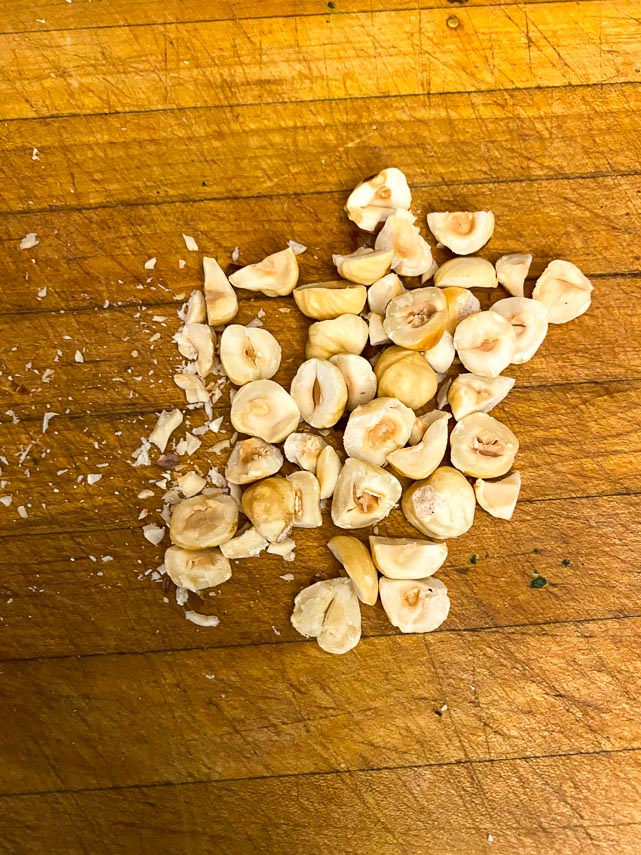

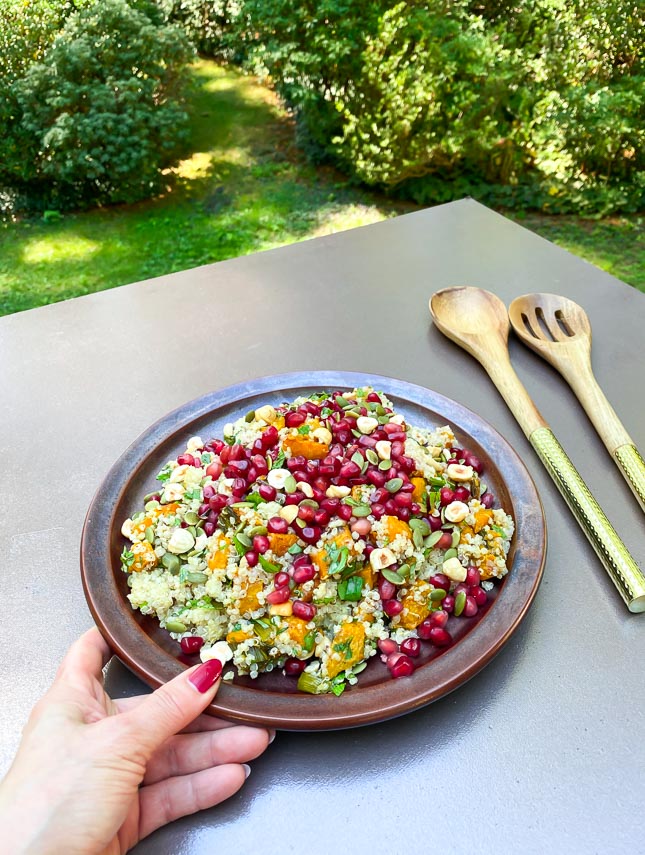
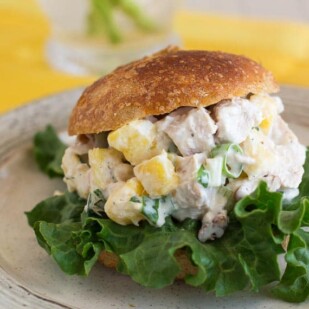
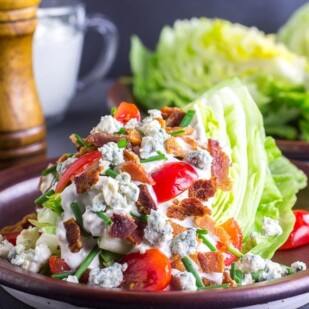




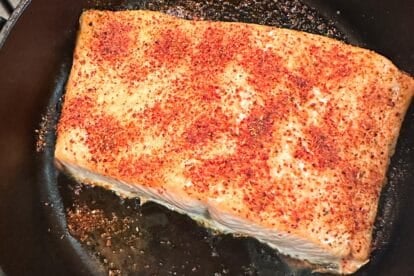
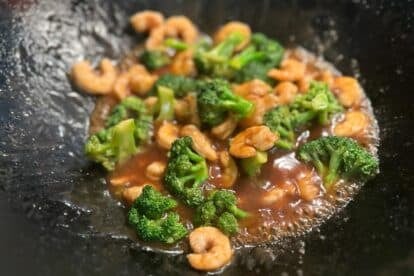
Regarding the Pumpkin Kabocha, you said the 75g is just the recommended serving size. But why would they recommend a serving size at all, if there is no limit to how much you can consume? I’m having a hard time understanding this. If could explain I would be glad, thanks!
This can be answered a few ways. First of all, it would never be prudent to say “eat as much as you want” of anything! And when you have IBS, that is even more true. Overloading your digestive tract with any food could trigger digestive upset. In “theory” you can eat as much as you want, but our dietitians do not recommend it. Also, in this case, the pumpkin is within a dish with many other ingredients and not everything is free of FODMAPs.